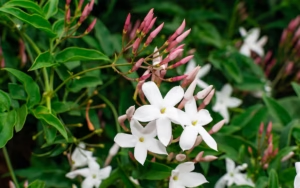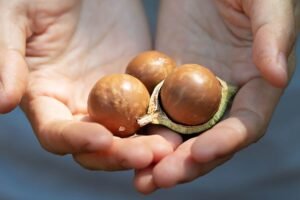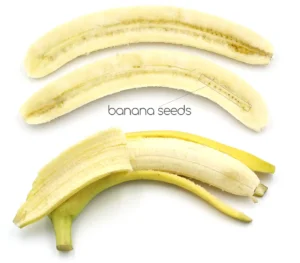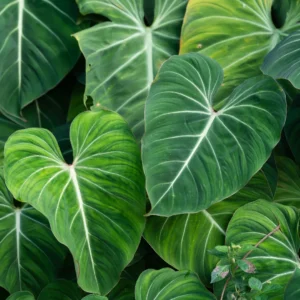Crabapple trees are a charming addition to any garden. Their beautiful blossoms in spring and colorful fruits in fall make them a favorite for gardeners and wildlife enthusiasts. This detailed guide will walk you through every aspect of planting, growing, and maintaining these delightful trees.
Crabapple Tree Information Table
| Common Name | Crabapple Tree |
| Botanical Name | Malus spp. |
| Family | Rosaceae |
| Plant Type | Deciduous tree |
| Mature Size | 10–25 ft. tall, 10–25 ft. wide |
| Sun Exposure | Full sun |
| Soil Type | Well-drained, loamy soil |
| Soil pH | 5.5–7.5 (neutral to slightly acidic) |
| Hardiness Zones | 4–8 |
| Native Area | Asia, Europe, North America |
| Toxicity | Non-toxic to humans, toxic to dogs |
Planting and Transplanting Crabapple Tree
When to Plant
The best time to plant a crabapple tree is in the spring or fall. Planting in these seasons allows the tree to establish roots in mild temperatures before the extremes of summer or winter.
How to Plant
- Select the Site: Choose a location with full sun exposure, at least six to eight hours a day. Avoid areas with poor drainage or heavy clay soil.
- Prepare the Soil: Loosen the soil to a depth of about 18 inches and mix in organic matter like compost.
- Dig the Hole: The hole should be twice as wide as the root ball and just as deep.
- Plant the Tree: Place the tree in the hole, ensuring the root flare (where the trunk meets the roots) is just above the soil line. Backfill the hole gently, tamping the soil to remove air pockets.
- Water Well: Water the tree thoroughly after planting to help it settle into its new environment.
Transplanting Tips
Transplant crabapple trees during dormancy (late fall or early spring). Minimize root damage by digging a wide root ball, and replant immediately in a prepared hole. Water generously after transplanting.
Crabapple Tree Care
Watering Needs
Crabapple trees require consistent watering during their first year. Once established, they tolerate some drought but prefer moist, well-drained soil. Water deeply, especially during dry periods.
Fertilizing
Fertilize in early spring with a balanced, slow-release fertilizer (e.g., 10-10-10). Avoid over-fertilizing, as excessive nitrogen can reduce flowering and fruiting.
Mulching
Apply a 2-3 inch layer of mulch around the base of the tree, keeping it a few inches away from the trunk. Mulch helps retain soil moisture, regulate temperature, and suppress weeds.
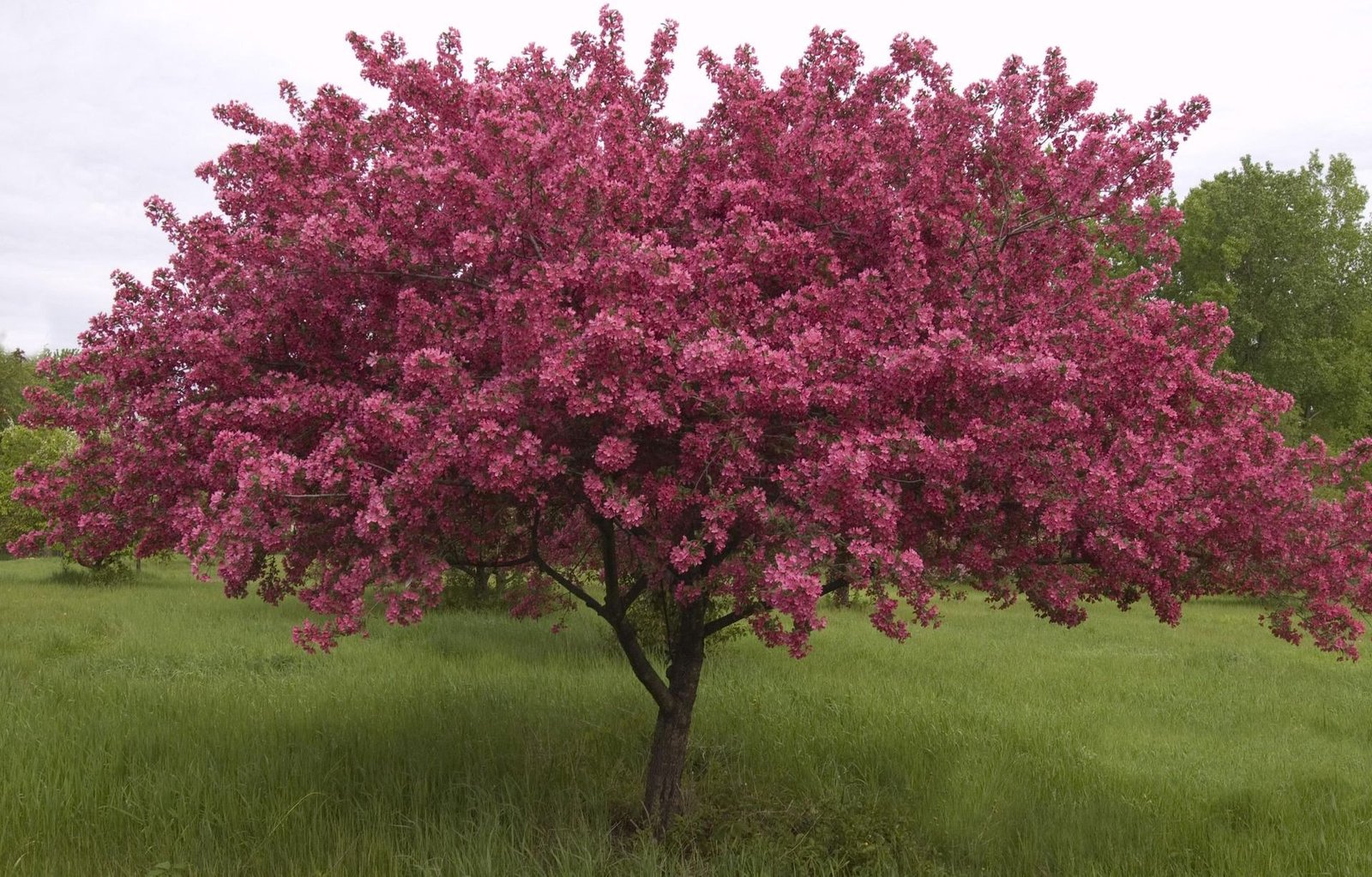
Types of Crabapple Tree
Crabapple trees come in various cultivars with unique features. Here are some popular types:
- ‘Spring Snow’: Known for its pure white blossoms and absence of fruit.
- ‘Prairifire’: Offers stunning reddish-pink blooms and maroon fruits.
- ‘Golden Hornet’: Produces bright yellow fruit, perfect for ornamental value.
- ‘Royal Raindrops’: Features purple foliage and magenta flowers.
- ‘Dolgo’: A hardy variety with large, edible fruit suitable for jelly making.
Pruning
When to Prune
Prune crabapple trees in late winter or early spring while they are dormant. This minimizes stress and reduces the risk of infection.
How to Prune
- Remove dead, diseased, or crossing branches.
- Thin out the canopy to improve air circulation and light penetration.
- Avoid over-pruning, as it can reduce flowering and fruiting.
Why Prune?
Pruning helps maintain the tree’s shape, promotes healthy growth, and enhances flowering and fruit production.
Propagating Crabapple Tree
From Cuttings
Crabapple trees can be propagated through softwood cuttings taken in early summer:
- Cut a 6-inch healthy branch with leaves.
- Remove the bottom leaves and dip the cut end in rooting hormone.
- Plant the cutting in moist potting mix and cover with plastic to retain humidity.
- Place in indirect light and mist regularly until roots develop.
How to Grow Crabapple Tree From Seeds
Seed Preparation
- Harvest Seeds: Collect seeds from ripe crabapples in late fall.
- Stratification: Place seeds in a moist paper towel, seal them in a plastic bag, and refrigerate for 60–90 days to mimic winter conditions.
Planting Seeds
- Sow seeds in small pots filled with well-draining potting mix.
- Keep the soil consistently moist.
- Transplant seedlings outdoors when they are about 6 inches tall.
Growing from seeds is time-consuming and requires patience, as it may take years for the tree to mature and bloom.
Potting and Repotting Crabapple Tree
Crabapple trees can be grown in containers, especially dwarf varieties.
How to Pot
- Use a large pot with drainage holes.
- Fill with loamy soil mixed with organic compost.
- Plant the tree and water thoroughly.
Repotting
Repot every 2–3 years or when the tree outgrows its pot. Choose a container 2–4 inches larger than the current one.
Overwintering
Protect young crabapple trees from harsh winters:
- Mulch around the base to insulate roots.
- Wrap the trunk with burlap to shield it from frost and sunscald.
- Water deeply before the first freeze to keep roots hydrated.
Harvesting Crabapple Tree
Crabapple fruits ripen in late summer to early fall, depending on the variety.
How to Harvest
- Check for ripeness by tasting or gently pulling the fruit—it should come off easily.
- Use the harvested fruits immediately or store them in a cool, dry place.
Crabapples are perfect for making jams, jellies, and ciders.
Uses for Crabapple Tree
- Ornamental: Enhances landscapes with beautiful flowers and colorful fruits.
- Wildlife Habitat: Provides food for birds and pollinators.
- Culinary: Fruits are used in preserves, sauces, and ciders.
- Medicinal: Historically used in folk medicine for digestive and skin issues.
Common Problems With Crabapple Tree
Leaf Spot
A fungal disease that causes dark spots on leaves. Prevent it with good air circulation and fungicide sprays.
Fire Blight
A bacterial infection that blackens branches and twigs. Prune affected areas and disinfect tools between cuts.
Common Pests & Plant Diseases
- Aphids: These sap-sucking pests can cause leaf curling and stunted growth. Use insecticidal soap or neem oil.
- Japanese Beetles: These feed on foliage, creating skeletonized leaves. Handpick or use traps.
- Apple Scab: Causes lesions on leaves and fruit. Apply fungicides and remove fallen debris.
How to Get Crabapple Tree to Bloom
- Adequate Sunlight: Ensure the tree receives full sun.
- Proper Pruning: Avoid excessive pruning, which can reduce blooms.
- Balanced Fertilizer: Use a low-nitrogen fertilizer to encourage flowers instead of excessive foliage.
FAQ
Are crabapples edible?
Yes, crabapples are edible, but they are often tart. They are best used in jams, jellies, and ciders.
How long does a crabapple tree live?
With proper care, crabapple trees can live 30–70 years.
Do crabapples attract wildlife?
Yes, birds, bees, and butterflies are attracted to crabapple blossoms and fruits.
Can crabapple trees grow in containers?
Yes, dwarf varieties grow well in containers with proper care and repotting.
Read also: Bloomerang Lilac: How to Grow and Care for Bloomerang Lilac


